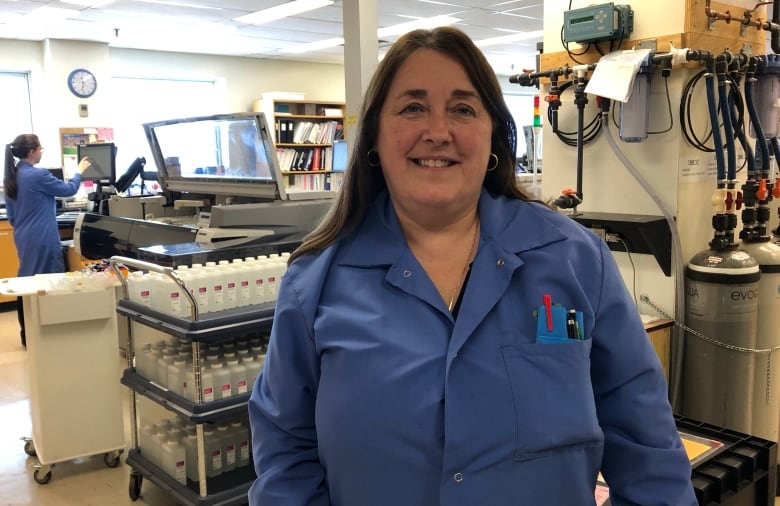
21 May Fast fentanyl tests help ‘raise an alarm’ of spike in overdoses
P.E.I. hospitals are now testing for fentanyl when patients come into an emergency department with an overdose.
Doing that testing on-site means faster results and enables public health officials to see quickly if there’s a spike in overdoses from fentanyl and alert the public of the risk.
Fentanyl is a powerful opioid that is sometimes cut into illicit street drugs, and has been linked to thousands of overdoses and deaths across the country.
“If we see a number of fentanyl-related overdoses in a short period of time it would raise an alarm that there may be some supply that has been laced with fentanyl and we’d want to get the message out to the public in trying to reduce the harms,” said Dr. Heather Morrison, P.E.I.’s chief public health officer.
Her office issued one such alert a year ago when fentanyl was found in some cocaine seized by police.
Labs at four P.E.I. hospitals started testing for fentanyl in overdose cases last November. Tests are done at Queen Elizabeth Hospital in Charlottetown, Summerside’s Prince County Hospital, Western Hospital in O’Leary and Kings County Hospital in Montague.

“Previous to doing this test here in the chemistry lab at the QEH … we had to send it to a lab in Toronto and it would take anywhere from a week to 10 days, up to 14 days for a result,” said Donna Stanley, chief technologist in the chemistry lab at QEH.
Now when someone comes in with a suspected overdose from fentanyl, the lab drops everything else and does the test immediately, said Stanley.
“From the time we receive it to the time of reporting it usually takes five minutes to do the test. So from the time we receive it in the lab to the time we report it in [the ER] it should be about 10 minutes,” she said.
When medical staff suspect an overdose, they treat the patient for that — but having a lab confirmation within minutes “is very important for the physician,” if the patient isn’t responding to treatment provided to that point.
The test analyzes the patient’s urine and detects the presence of fentanyl in their system.

1 fentanyl-related death in 2018
According to the latest numbers, 25 Islanders accidentally overdosed on opioids in 2018 — that’s up from 10 in the last eight months of 2017, when Morrison’s office began tracking them.
Last year three Islanders died from an accidental opioid overdose, and one of those deaths was from opioids containing fentanyl, the first lab-confirmed case since 2016. Those numbers could increase as investigations into deaths are completed. In 2019, as of March, there were two opioid overdoses and one of them involved fentanyl.

While P.E.I. has not seen the dramatic numbers of fentanyl overdoses that are considered epidemics in parts of B.C., Alberta and Ontario, the impact here on P.E.I. is a concern, said the chief health officer.
“Although we haven’t seen the same number of overdose opioid-related deaths in P.E.I. as they have in the rest of the country it still impacts individuals and their families to a significant degree here,” she said, and “reinforces why we need to focus on harm reduction and distribution of naloxone kits.”

Since June 2017 the province has provided free naloxone take-home kits to those at high risk of an overdose and groups that work with them.
So far more than 900 kits have gone out. It’s difficult to tell how many have been used, but Morrison said at least 17 were used and returned for a replacement and in all those cases the kit successfully saved a life, said Morrison.
Prescription review
Morrison’s office issues reports every four months on the progress of a provincial committee working to prevent opioid overdoses. That group has just finished its first annual review of prescription monitoring for the top five prescribed opioids on P.E.I., which Morrison said will help provide a baseline for health officials to monitor changes in opioid use.
It shows that since 2013 prescriptions for oxycodone and codeine have been decreasing; use of hydromorphone and morphine are up a bit.

She said the increase of prescriptions for morphine could be that patients are getting smaller amounts more often. But the real change, which Morrison calls “a very positive thing” is the number of methadone and suboxone prescriptions, which has almost tripled, from 4,669 in 2013 to 12,559 in 2017
Morrison plans to continue with the prescription monitoring annually to monitor trends in opioid use.
More P.E.I. news
[ad_2]
Source link



No Comments